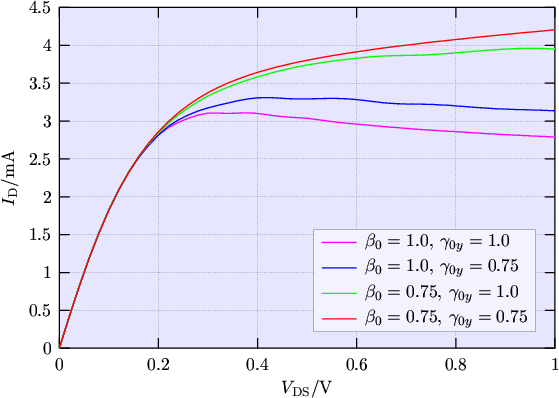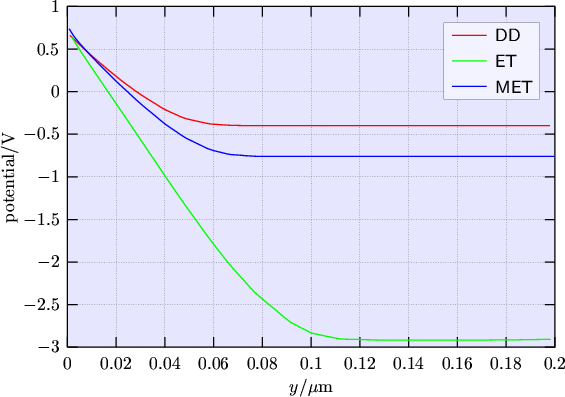To verify the modified energy transport model, another SOI device has been investigated
(Device 4). The standard energy transport model predicts the drop in the drain current also for this
device (
 ,
,
 in Fig. 6.14). Applying the modified
model using the same parameters as before leads to output characteristics with only positive
output conductance. The different order of magnitude of the drain currents seen with Device 1
and Device 4 mainly stems from the rather high threshold voltage of Device 1.
in Fig. 6.14). Applying the modified
model using the same parameters as before leads to output characteristics with only positive
output conductance. The different order of magnitude of the drain currents seen with Device 1
and Device 4 mainly stems from the rather high threshold voltage of Device 1.
Figure 6.14:
Output characteristics of the "Well-Tempered" SOI (Device 4) at
 .
.
|
 |
The difference in the electron concentration is shown in Fig. 6.15. In the
case of the standard energy transport model, the spreading of the hot electrons is much more pronounced
than with the modified one.
Figure 6.15:
Electron concentration in the "Well-Tempered" SOI (Device 4) obtained
by a standard energy transport and a modified energy transport simulation.
|
![\includegraphics[width=.65\textwidth]{eps/2D_WellTemp_merged}](img1105.png) |
By looking at the potential in the device at a vertical cut located in the middle between
source and drain (Fig. 6.16), the difference between the standard energy transport model
and the modified one is also clearly visible. The standard energy transport model produces an anomalous
decrease of the body potential.
Figure 6.16:
Vertical potential distribution in the "Well-Tempered" SOI (Device 4)
obtained by drift-diffusion, energy transport, and modified energy transport simulations.
|
 |
M. Gritsch: Numerical Modeling of Silicon-on-Insulator MOSFETs PDF
![\includegraphics[width=.65\textwidth]{eps/2D_WellTemp_merged}](img1105.png)
